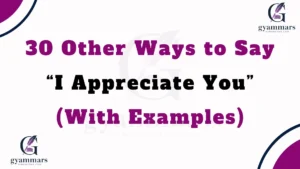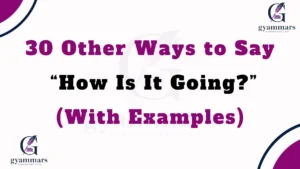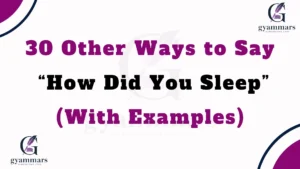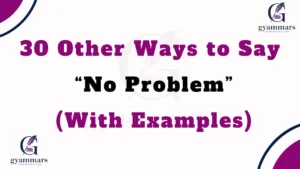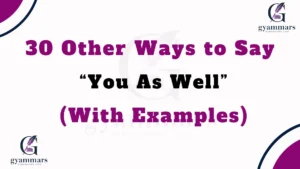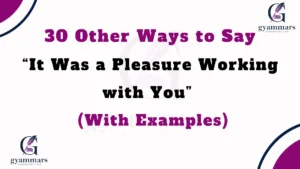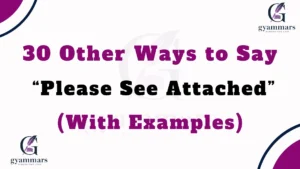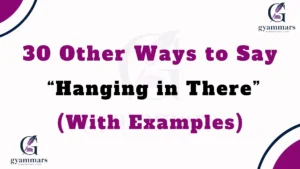Finding the right words at the right time isn’t always easy. Sometimes, you’re in a conversation where you don’t know what to say next — whether it’s a serious talk, a flirty chat, or a professional exchange. Having a few thoughtful alternatives ready can help you sound more confident, empathetic, and natural.
These 30 expressions offer creative, warm, and polite ways to express that you’re thinking about your next words — without sounding awkward or lost.
What Does “What To Say Next” Mean?
The phrase “what to say next” refers to a moment in conversation when someone is unsure how to continue or respond. It expresses hesitation, reflection, or a search for the right words to keep the dialogue flowing smoothly.
It’s often used when people want to maintain engagement but need a moment to collect their thoughts — showing that they care about communicating thoughtfully rather than rushing to reply.
Is It Professional or Polite to Say “What To Say Next”?
Yes — but with context. Saying “what to say next” in professional or casual settings shows honesty and reflection. However, it may sound uncertain if used too often in formal settings.
In professional communication, it’s better to use alternatives like:
- “Let me gather my thoughts for a second.”
- “I’d like to consider the best way to respond.”
These show confidence and thoughtfulness without implying hesitation.
Pros and Cons of Saying “What To Say Next”
Pros:
- Shows authenticity and emotional awareness.
- Makes conversations feel human and real.
- Helps avoid rushed or thoughtless responses.
Cons:
- May sound unsure in professional contexts.
- Can interrupt the natural flow of dialogue.
- Overuse might make you seem hesitant.
Synonyms For “What To Say Next”
- I’m thinking of how to put this.
- Give me a second to gather my thoughts.
- Let me find the right words.
- I’m trying to figure out the best way to say this.
- Hold on, I want to say this right.
- I need a moment to think.
- I’m reflecting on what to say next.
- Let me take a moment to process that.
- I’m not sure how to respond yet.
- I want to choose my words carefully.
- Let me think that through for a second.
- I’m gathering my thoughts right now.
- I’m searching for the right response.
- I’m thinking about how to continue this conversation.
- Give me a second, I’m processing.
- I’m considering my next words.
- I need a moment to respond thoughtfully.
- I want to phrase this properly.
- I’m just trying to find the right thing to say.
- Let me take a moment before I reply.
- I’m trying to organize my thoughts.
- I’m reflecting on your words.
- I’m thinking about how to move the conversation forward.
- Give me a moment to think that over.
- I’m not sure how to phrase this yet.
- I’m trying to think of the best response.
- I want to make sure I say this clearly.
- I’m finding the right way to put my thoughts.
- I’m giving your words some thought.
- I’m trying to say this the right way.
Now, let’s go through each alternative in detail 👇
1. I’m thinking of how to put this
Definition: Expresses that you’re carefully considering how to phrase your response.
Explanation: This phrase shows you’re thoughtful and don’t want to say something impulsively.
Scenario Example: “I’m thinking of how to put this… your idea is good, but maybe we can refine it a bit.”
Best Use: When you want to sound respectful or diplomatic.
Tone: Reflective, calm, and composed.
Additional Notes: Ideal for sensitive or delicate conversations.
2. Give me a second to gather my thoughts
Definition: Politely asks for a moment to think before replying.
Explanation: It’s a friendly way to pause a conversation without sounding rude.
Scenario Example: “Give me a second to gather my thoughts before I respond to that.”
Best Use: Great for meetings, interviews, or deep talks.
Tone: Respectful and composed.
Additional Notes: Works both professionally and casually.
3. Let me find the right words
Definition: Suggests care in choosing how you express yourself.
Explanation: It conveys sincerity and emotional intelligence.
Scenario Example: “Let me find the right words… I really appreciate what you did for me.”
Best Use: When expressing gratitude or emotions.
Tone: Thoughtful and heartfelt.
Additional Notes: Excellent for personal conversations.
4. I’m trying to figure out the best way to say this
Definition: Indicates you want to communicate clearly and respectfully.
Explanation: Helps you express hesitation while maintaining honesty.
Scenario Example: “I’m trying to figure out the best way to say this, but I disagree with that point.”
Best Use: Use in difficult or constructive discussions.
Tone: Honest yet gentle.
Additional Notes: Soften criticism or disagreement.
5. Hold on, I want to say this right
Definition: Signals that you care about saying something accurately.
Explanation: This phrase feels casual but shows emotional awareness.
Scenario Example: “Hold on, I want to say this right… I didn’t mean to hurt your feelings.”
Best Use: Personal and emotional conversations.
Tone: Caring and sincere.
Additional Notes: Adds a human touch to dialogue.
6. I need a moment to think
Definition: Simple phrase to pause before responding.
Explanation: Short, clear, and polite — ideal for any situation.
Scenario Example: “I need a moment to think before I answer that.”
Best Use: When handling unexpected questions.
Tone: Calm and neutral.
Additional Notes: A universal, professional-safe phrase.
7. I’m reflecting on what to say next
Definition: Suggests deep thought before speaking.
Explanation: Sounds mature and emotionally intelligent.
Scenario Example: “I’m reflecting on what to say next because I want to be honest but kind.”
Best Use: When conversations are personal or sensitive.
Tone: Thoughtful and warm.
Additional Notes: Good for counseling or mentoring settings.
8. Let me take a moment to process that
Definition: You’re mentally digesting the information before replying.
Explanation: Reflects emotional depth and patience.
Scenario Example: “Let me take a moment to process that — that’s a lot to take in.”
Best Use: After receiving surprising or emotional news.
Tone: Grounded and empathetic.
Additional Notes: Helps slow emotional conversations down.
9. I’m not sure how to respond yet
Definition: Honest admission of uncertainty.
Explanation: Expresses vulnerability and authenticity.
Scenario Example: “I’m not sure how to respond yet — I just need to think it through.”
Best Use: For emotionally charged or confusing moments.
Tone: Vulnerable and real.
Additional Notes: Shows self-awareness.
10. I want to choose my words carefully
Definition: You’re being cautious to avoid misunderstanding.
Explanation: Often used in delicate or professional conversations.
Scenario Example: “I want to choose my words carefully because this is important.”
Best Use: Negotiations, apologies, or feedback.
Tone: Serious and respectful.
11. Let me think that through for a second
Definition: A polite pause to analyze or understand something before replying.
Explanation: This shows that you’re considering the other person’s words seriously and don’t want to rush a response.
Scenario Example: “Let me think that through for a second — it’s an interesting suggestion.”
Best Use: When evaluating ideas or decisions.
Tone: Professional, considerate.
Additional Notes: Ideal for work meetings or brainstorming sessions.
12. I’m gathering my thoughts right now
Definition: You’re mentally organizing what to say before continuing.
Explanation: This indicates mindfulness and a desire to communicate clearly.
Scenario Example: “I’m gathering my thoughts right now — it’s a lot to take in.”
Best Use: When processing emotional or detailed conversations.
Tone: Calm, reflective.
Additional Notes: Works well in serious discussions or when handling sensitive topics.
13. I’m searching for the right response
Definition: Shows you want your reply to be accurate and respectful.
Explanation: This conveys patience and emotional depth.
Scenario Example: “I’m searching for the right response because your words really matter.”
Best Use: When responding to emotional messages or confessions.
Tone: Empathetic and soft.
Additional Notes: Works beautifully in close or heartfelt relationships.
14. I’m thinking about how to continue this conversation
Definition: Expresses reflection and the desire to maintain connection.
Explanation: Helps you navigate tricky or serious discussions gracefully.
Scenario Example: “I’m thinking about how to continue this conversation because I want to get it right.”
Best Use: In relationship or counseling conversations.
Tone: Warm and thoughtful.
Additional Notes: Excellent for showing emotional maturity.
15. Give me a second, I’m processing
Definition: A short, modern phrase showing active thinking.
Explanation: It’s concise but implies you’re fully engaged.
Scenario Example: “Give me a second, I’m processing what you just said.”
Best Use: Casual or semi-formal conversations.
Tone: Calm and neutral.
Additional Notes: Commonly used in digital or face-to-face chats.
16. I’m considering my next words
Definition: You’re carefully thinking before you speak.
Explanation: Conveys respect and self-awareness in dialogue.
Scenario Example: “I’m considering my next words — I don’t want to say something I’ll regret.”
Best Use: When tension is high or emotions are strong.
Tone: Serious and reflective.
Additional Notes: Perfect for resolving conflicts respectfully.
17. I need a moment to respond thoughtfully
Definition: A gentle way to express that you’re thinking before answering.
Explanation: It demonstrates maturity and intention in communication.
Scenario Example: “I need a moment to respond thoughtfully because this topic means a lot.”
Best Use: Emotional or meaningful discussions.
Tone: Kind, respectful.
Additional Notes: A favorite phrase in counseling or leadership talks.
18. I want to phrase this properly
Definition: You’re trying to communicate clearly and politely.
Explanation: This suggests awareness of tone and wording.
Scenario Example: “I want to phrase this properly — I’m grateful for your honesty.”
Best Use: When giving or receiving sensitive feedback.
Tone: Balanced and respectful.
Additional Notes: Helps prevent misunderstandings.
19. I’m just trying to find the right thing to say
Definition: Expresses honesty and thoughtfulness.
Explanation: Shows you care about how your words will affect someone.
Scenario Example: “I’m just trying to find the right thing to say… I didn’t expect that.”
Best Use: When comfort or empathy is needed.
Tone: Soft and human.
Additional Notes: A relatable, genuine way to pause mid-conversation.
20. Let me take a moment before I reply
Definition: A polite pause to collect your thoughts.
Explanation: Indicates calmness and control in communication.
Scenario Example: “Let me take a moment before I reply — I want to be sure about my answer.”
Best Use: In written messages, emails, or tense talks.
Tone: Professional and measured.
Additional Notes: Shows discipline and emotional intelligence.
21. I’m trying to organize my thoughts
Definition: You’re mentally arranging ideas before responding.
Explanation: Signals clarity and self-control.
Scenario Example: “I’m trying to organize my thoughts — this topic’s a bit complex.”
Best Use: During intellectual or strategic conversations.
Tone: Thoughtful and rational.
Additional Notes: Great for problem-solving discussions.
22. I’m reflecting on your words
Definition: You’re giving the speaker’s message real attention.
Explanation: Shows empathy and active listening.
Scenario Example: “I’m reflecting on your words — they really made me think.”
Best Use: In emotional or meaningful talks.
Tone: Calm, appreciative.
Additional Notes: Deepens mutual understanding.
23. I’m thinking about how to move the conversation forward
Definition: You’re considering how to continue productively.
Explanation: Reflects leadership and constructive communication.
Scenario Example: “I’m thinking about how to move the conversation forward so we both feel heard.”
Best Use: Conflict resolution or teamwork.
Tone: Cooperative and balanced.
Additional Notes: Great for managers and facilitators.
24. Give me a moment to think that over
Definition: You’re asking for a short pause to reflect.
Explanation: Simple and courteous — never sounds awkward.
Scenario Example: “Give me a moment to think that over — I’ll give you a clear answer.”
Best Use: When making decisions or responding to offers.
Tone: Professional and composed.
Additional Notes: A timeless and respectful phrase.
25. I’m not sure how to phrase this yet
Definition: Expresses hesitation while staying polite.
Explanation: Shows respect for clarity and tone.
Scenario Example: “I’m not sure how to phrase this yet — I don’t want to offend you.”
Best Use: When tackling sensitive subjects.
Tone: Gentle and diplomatic.
Additional Notes: Reflects empathy and self-awareness.
26. I’m trying to think of the best response
Definition: Indicates thoughtfulness before replying.
Explanation: Suggests maturity and awareness in communication.
Scenario Example: “I’m trying to think of the best response to what you said earlier.”
Best Use: When the topic is emotional or important.
Tone: Neutral to warm.
Additional Notes: Works well in messages and personal talks.
Also Read This : 30 Other Ways to Say “Get Well Soon” (With Examples)
27. I want to make sure I say this clearly
Definition: Emphasizes clarity and responsibility in communication.
Explanation: This phrase makes you sound articulate and respectful.
Scenario Example: “I want to make sure I say this clearly — I really appreciate your help.”
Best Use: When clarifying feelings or facts.
Tone: Clear and sincere.
Additional Notes: Builds credibility and trust.
28. I’m finding the right way to put my thoughts
Definition: You’re working on expressing your thoughts coherently.
Explanation: Reflects patience and emotional control.
Scenario Example: “I’m finding the right way to put my thoughts about this project.”
Best Use: For deep discussions or feedback moments.
Tone: Reflective and professional.
Additional Notes: Encourages calm conversation flow.
29. I’m giving your words some thought
Definition: You’re acknowledging the speaker and taking time to think.
Explanation: Demonstrates respect and active listening.
Scenario Example: “I’m giving your words some thought — you made an excellent point.”
Best Use: After someone shares an idea, feedback, or confession.
Tone: Appreciative and thoughtful.
Additional Notes: Builds rapport and trust.
30. I’m trying to say this the right way
Definition: You’re being mindful of how your words may be received.
Explanation: Reflects care, empathy, and awareness of tone.
Scenario Example: “I’m trying to say this the right way — I value our friendship a lot.”
Best Use: In emotional, romantic, or personal situations.
Tone: Sincere and heartfelt.
Additional Notes: Keeps conversations open, warm, and honest.
Conclusion
Learning other ways to say “what to say next” makes your speech and writing feel more natural, polished, and emotionally intelligent. Whether you’re texting a friend, emailing a boss, or comforting someone — these alternatives help you pause gracefully and communicate with warmth.
The secret isn’t having perfect words — it’s showing that you care enough to find them.
FAQs
1. Why should I use alternatives to “what to say next”?
Because they help you sound calm, thoughtful, and confident instead of uncertain.
2. Which phrase fits best in professional settings?
Use “Give me a moment to think that over” or “Let me gather my thoughts.”
3. What’s the most empathetic alternative?
“Let me find the right words.” It feels sincere and emotionally aware.
4. Can I use these in text messages?
Absolutely — short ones like “Give me a sec, I’m processing.” sound natural and friendly.
5. How do I sound confident when I pause?
Maintain eye contact (or use calm tone in text) and use reflective phrases like “I’m thinking about how to say this.”

“Emma Brooke at Grammar Synonyms is your trusted source for mastering the art of language. Whether you’re looking for the perfect synonym, refining your grammar, or searching for that one ideal phrase, we’ve got you covered. With a wealth of tools and resources, Emma Brooke brings you creative solutions for all your writing needs, making sure your words always hit the mark. Unlock a world of language possibilities and elevate your writing with ease.”

